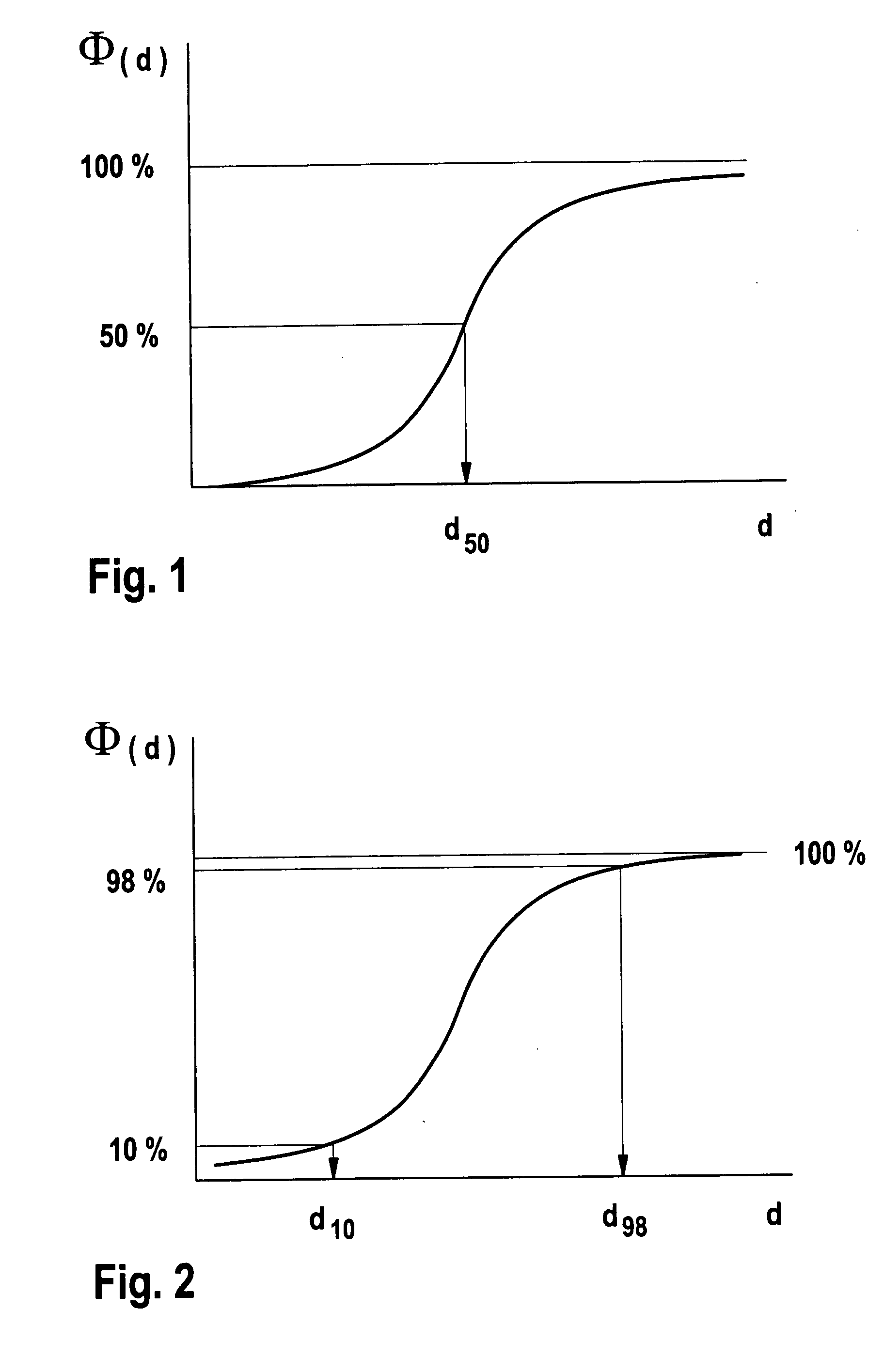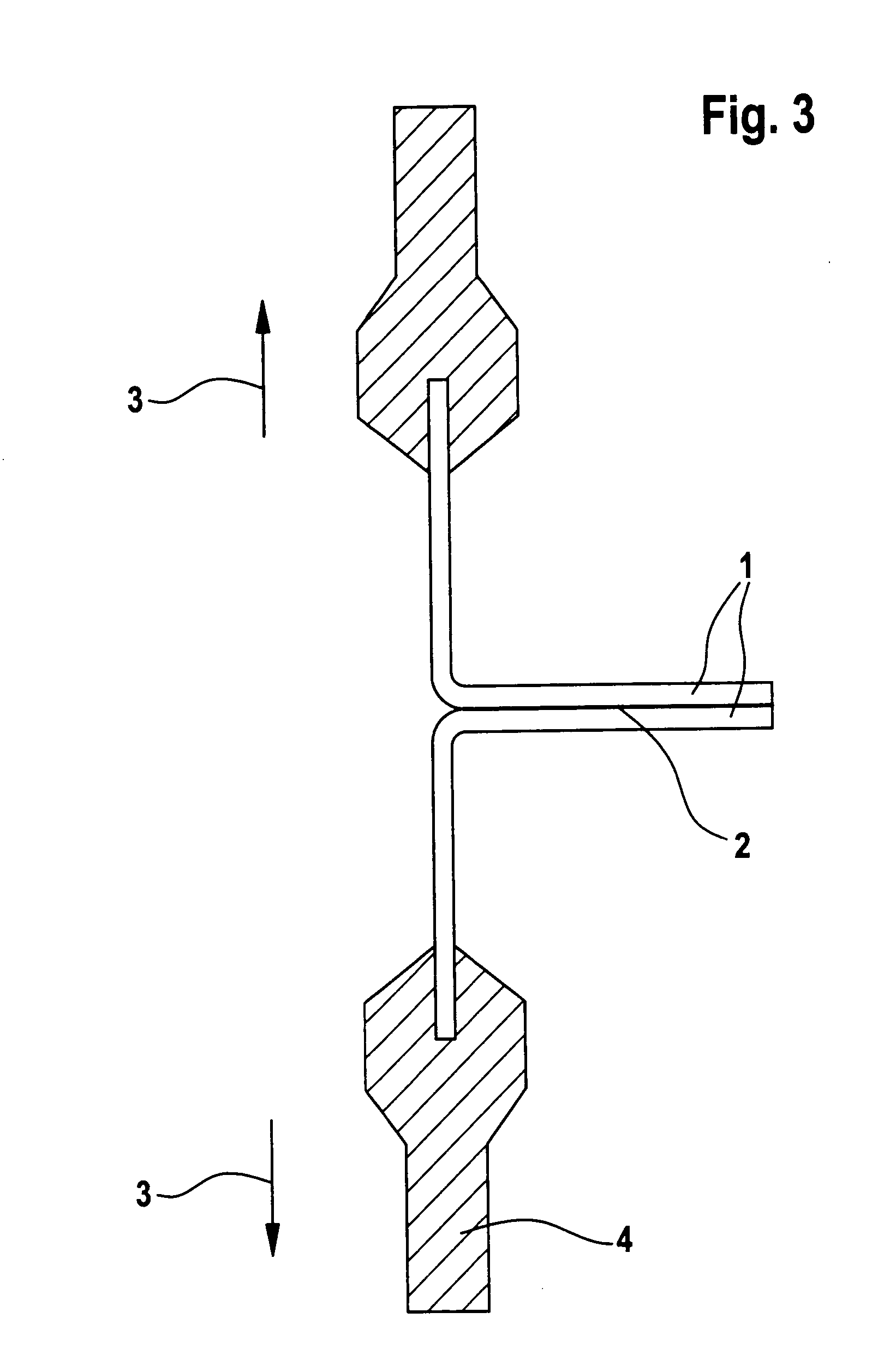Multilayer, metalized or ceramic-coated, sealable, biaxially oriented polyester film, its use, and process for its production
- Summary
- Abstract
- Description
- Claims
- Application Information
AI Technical Summary
Benefits of technology
Problems solved by technology
Method used
Image
Examples
example 1
[0101] Chips made from polyethylene terephthalate (produced by the transesterification process using Mn as transesterification catalyst, Mn concentration: 100 ppm) were dried at 150.degree. C. to residual moisture below 100 ppm, and fed to the extruder for the base layer (B). Similarly, chips made from polyethylene terephthalate and particles were fed to the extruder for the non-sealable outer layer (C).
[0102] In addition to this, chips were produced from a linear polyester composed of an amorphous copolyester comprising 78 mol % of ethylene terephthalate and 22 mol % of ethylene isophthalate (prepared by the transesterification process using Mn as transesterification catalyst, Mn concentration: 100 ppm). The copolyester was dried at a temperature of 100.degree. C. to residual moisture below 200 ppm and fed to the extruder for the sealable outer layer (A).
[0103] Coextrusion followed by stepwise longitudinal and transverse orientation was then used to produce a transparent, three-lay...
example 2
[0107] Using example 1 as the basis, the outer layer thickness for the sealable layer (A) was raised from 1.5 to 2.5 .mu.m, while the structure of the film and the method of production were otherwise identical. There was a resultant improvement in sealing properties, and in particular a marked increase in seal seam strength. The film had the required sealing properties and the desired handling properties, and the desired processing performance on systems which operate in a vacuum. The film was coated in a vacuum as in example 1.
example 3
[0108] Using example 1 as a basis, a film of thickness 20 .mu.m was now produced. The outer layer thickness for the sealable layer (A) was 3.0 .mu.m, and that for the non-sealable layer (C) was 2.0 .mu.m. Again, there was a resultant improvement in sealing properties, in particular a marked increase in seal seam strength. The film had the required sealing properties and the desired handling properties, and the desired processing performance on systems which operate in a vacuum. The film was coated in a vacuum as in example 1.
PUM
| Property | Measurement | Unit |
|---|---|---|
| Temperature | aaaaa | aaaaa |
| Angle | aaaaa | aaaaa |
| Angle | aaaaa | aaaaa |
Abstract
Description
Claims
Application Information
 Login to View More
Login to View More - R&D
- Intellectual Property
- Life Sciences
- Materials
- Tech Scout
- Unparalleled Data Quality
- Higher Quality Content
- 60% Fewer Hallucinations
Browse by: Latest US Patents, China's latest patents, Technical Efficacy Thesaurus, Application Domain, Technology Topic, Popular Technical Reports.
© 2025 PatSnap. All rights reserved.Legal|Privacy policy|Modern Slavery Act Transparency Statement|Sitemap|About US| Contact US: help@patsnap.com



